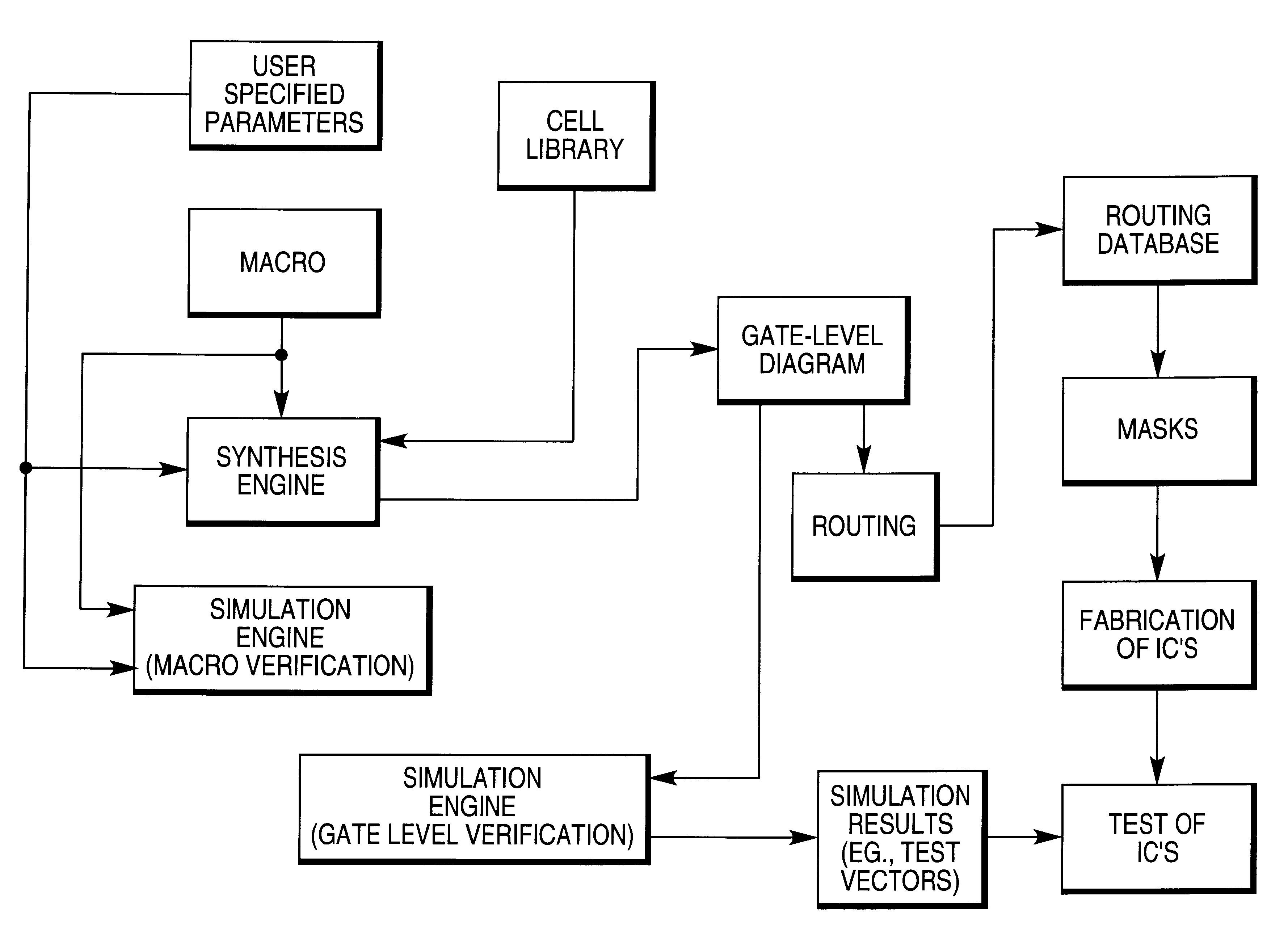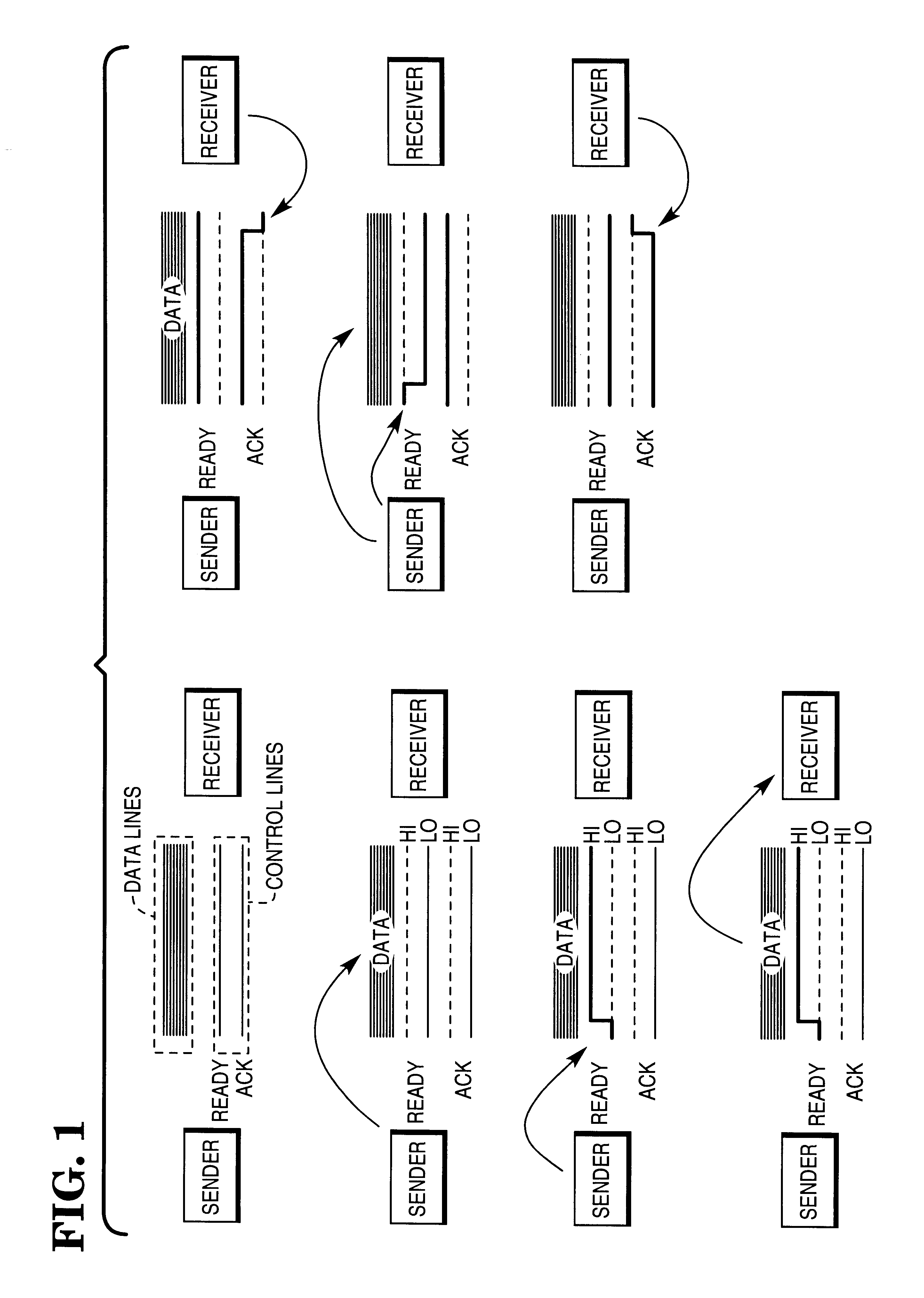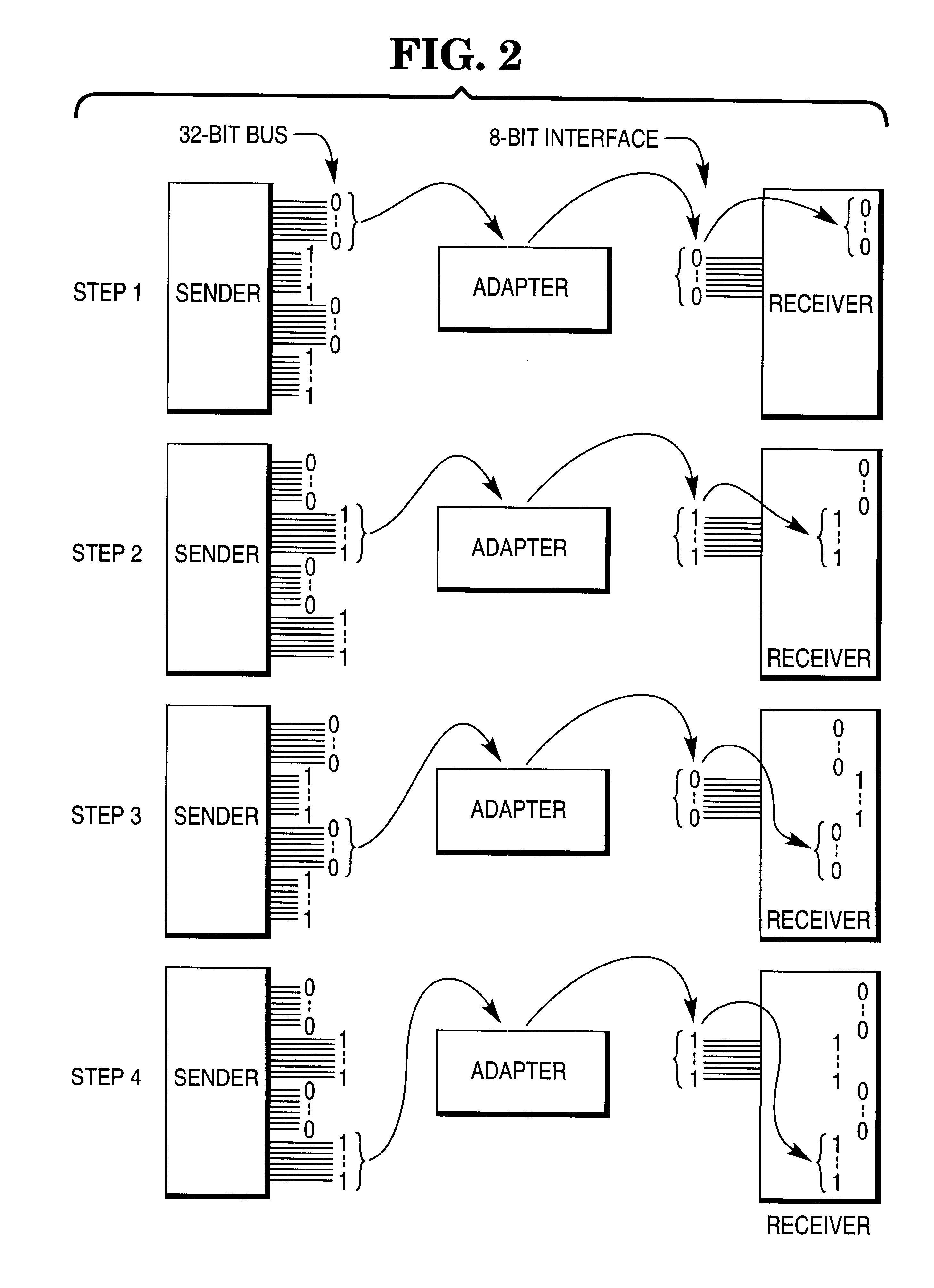Tunable architecture for device adapter
a device adapter and adapter technology, applied in the direction of cad circuit design, instruments, software simulation/interpretation/emulation, etc., can solve the problems of not necessarily achieving optimal matching to a particular device, device interface to a bus not operating in isolation, and processors becoming unavailable for other tasks, etc., to achieve a high degree of configuration
- Summary
- Abstract
- Description
- Claims
- Application Information
AI Technical Summary
Benefits of technology
Problems solved by technology
Method used
Image
Examples
Embodiment Construction
The microfiche appendix submitted with this application contains a computer listing for the software (hereinafter called a macro) used in creating and generating a configurable device adapter. The macro requires a VHDL compiler. VHDL compilers are commercially available. VHDL is an acronym referring to VHSIC Hardware Description Language. VHSIC is an acronym referring to Very High Speed Integrated Circuit.
Applicants have used a commercially available VHDL compiler known as V-System VHDL Simulator and Compiler Platform Revision 2.5, available from Model Technology, located Beaverton, Oreg.
To design a customized device adapter, the macro is used in two different ways, namely, (1) in synthesizing a gate-level logic diagram, and (2) in simulating the circuit.
Synthesis
To perform synthesis, a user does the following:
1. The user specifies the following parameters:
The width of the device interface (e.g., 8, 16, or 32 bits).
The address size (i.e. number of bits) of the device interface.
The d...
PUM
 Login to View More
Login to View More Abstract
Description
Claims
Application Information
 Login to View More
Login to View More - R&D
- Intellectual Property
- Life Sciences
- Materials
- Tech Scout
- Unparalleled Data Quality
- Higher Quality Content
- 60% Fewer Hallucinations
Browse by: Latest US Patents, China's latest patents, Technical Efficacy Thesaurus, Application Domain, Technology Topic, Popular Technical Reports.
© 2025 PatSnap. All rights reserved.Legal|Privacy policy|Modern Slavery Act Transparency Statement|Sitemap|About US| Contact US: help@patsnap.com



